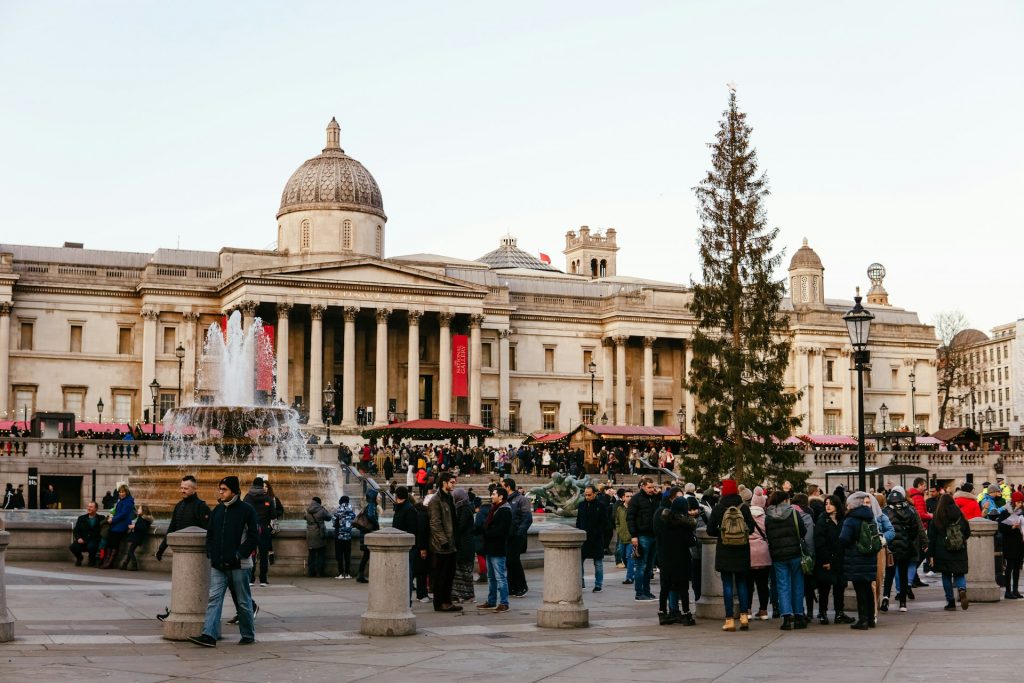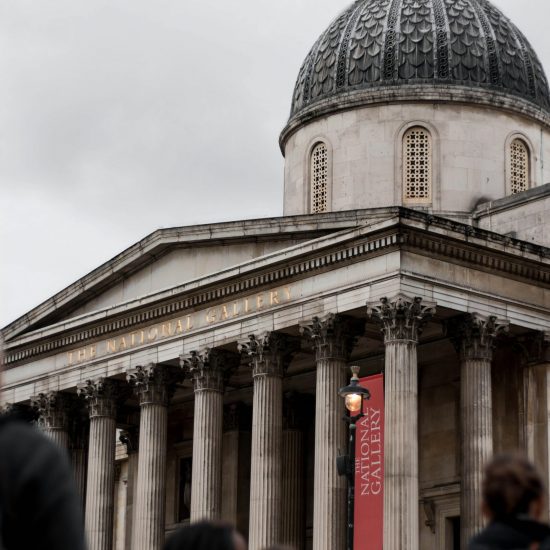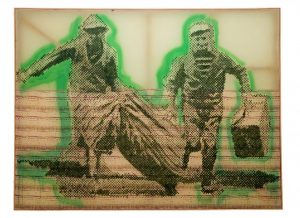The National Gallery in London is not just a repository of art; it is a testament to human creativity and a journey through the annals of history. Situated in the heart of the city at Trafalgar Square, the gallery is home to a collection of over 2,300 paintings dating from the mid-13th century to 1900. This guide delves into various aspects of the National Gallery, providing a comprehensive overview of its treasures, history, and visitor experience.
1. A Brief History of the National Gallery London
Origins of the National Gallery London
The National Gallery was established in 1824 when the British government purchased 38 paintings from the banker and collector John Julius Angerstein. Initially housed in Angerstein’s townhouse, the collection rapidly expanded, necessitating a larger space. The current location at Trafalgar Square was chosen, and the gallery opened its doors to the public in 1838.
Architectural Evolution
The original building, designed by William Wilkins, has undergone several expansions and renovations to accommodate the growing collection. Notable architects like Edward M. Barry and Robert Venturi have contributed to its evolving structure. The most recent addition is the Sainsbury Wing, designed by Robert Venturi and Denise Scott Brown, which opened in 1991 and houses the early Renaissance collection.
Milestones and Acquisitions
Over the years, the National Gallery has acquired numerous masterpieces through purchases, bequests, and donations. Significant acquisitions include the Arnolfini Portrait by Jan van Eyck, Vincent van Gogh’s Sunflowers, and The Fighting Temeraire by J.M.W. Turner. These acquisitions have cemented the gallery’s status as one of the leading art institutions in the world.
2. Masterpieces of the Collection
Renaissance Highlights
The National Gallery boasts an impressive collection of Renaissance art, featuring works by masters like Leonardo da Vinci, Michelangelo, and Raphael. Leonardo’s The Virgin of the Rocks is a standout, showcasing his mastery of composition and atmospheric perspective. Michelangelo’s The Entombment and Raphael’s The Madonna of the Pinks are also highlights, reflecting the profound spiritual and artistic depth of the Renaissance.
Baroque Brilliance
The Baroque period is well-represented with masterpieces by Caravaggio, Rubens, and Rembrandt. Caravaggio’s Supper at Emmaus captures the dramatic interplay of light and shadow that defines his work. Rubens’ Samson and Delilah and Rembrandt’s Self-Portrait at the Age of 34 demonstrate the emotional intensity and technical prowess of Baroque art.
Impressionist and Post-Impressionist Gems
The gallery also houses significant works from the Impressionist and Post-Impressionist movements. Claude Monet’s The Water-Lily Pond and Vincent van Gogh‘s A Wheatfield, with Cypresses are prime examples. These works illustrate the innovative approaches to color, light, and brushwork that characterized these movements, marking a departure from traditional representation.

Source: https://unsplash.com/photos/people-walking-near-brown-concrete-building-during-daytime-jyTcQ0l9M5U
3. Visitor Experience and Amenities
Guided Tours and Audio Guides
To enhance the visitor experience, the National Gallery offers a range of guided tours and audio guides. These services provide in-depth insights into the artworks and their historical contexts. Expert guides lead themed tours, focusing on specific periods, artists, or genres, offering a rich and engaging exploration of the collection.
Accessibility and Facilities of the National Gallery London
The gallery is committed to accessibility, ensuring that all visitors can enjoy its offerings. Wheelchair access is available throughout the gallery, and there are facilities for visually and hearing-impaired visitors, including tactile images and sign language tours. The gallery also provides baby-changing facilities, making it a family-friendly destination.
Dining and Shopping
The National Gallery offers several dining options, from the elegant National Café to the more casual Espresso Bar. Visitors can enjoy a range of culinary delights, from light snacks to full meals. The gallery’s shops offer a wide selection of art books, prints, and souvenirs, allowing visitors to take a piece of the National Gallery home with them.
4. Educational Programs of the National Gallery London
Workshops and Courses
The National Gallery is dedicated to education, offering a variety of workshops and courses for all ages. These programs include art classes, lectures, and hands-on workshops, providing opportunities for both beginners and experienced artists to learn and create. The gallery’s education department works to inspire a love of art and creativity in participants.
School and Community Programs
The gallery’s outreach extends to schools and community groups, with tailored programs designed to engage young people and diverse audiences. School visits are supported with educational materials and interactive sessions, helping to bring the world of art into the classroom. Community programs aim to make art accessible to everyone, regardless of background.
Digital Learning Resources
In the digital age, the National Gallery has embraced technology to expand its educational reach. The gallery’s website offers a wealth of online resources, including virtual tours, interactive guides, and educational videos. These digital tools allow people around the world to explore the gallery’s collection and learn about art history from the comfort of their homes.
5. Special Exhibitions and Events at the National Gallery London
Temporary Exhibitions
In addition to its permanent collection, the National Gallery hosts a dynamic program of temporary exhibitions. These exhibitions often focus on specific artists, movements, or themes, providing fresh perspectives and insights. Recent exhibitions have featured works by Artemisia Gentileschi, Claude Monet, and Titian, attracting art enthusiasts from around the world.
Lectures and Talks
The gallery regularly organizes lectures and talks by leading art historians, curators, and contemporary artists. These events offer deeper dives into specific aspects of the collection or current exhibitions, fostering a dialogue between experts and the public. The talks are often recorded and made available online, broadening their reach.
Family and Youth Events at the National Gallery London
To engage younger audiences, the National Gallery offers a variety of family-friendly events and activities. These include storytelling sessions, art-making workshops, and interactive tours designed to make art accessible and fun for children. Special youth programs provide opportunities for teenagers to explore their creativity and develop their artistic skills.

Source: https://unsplash.com/photos/a-large-crowd-of-people-outside-a-building-lLtmV0jcqk0
6. Planning Your Visit to the National Gallery London
Opening Hours and Admission
The National Gallery is open daily, with extended hours on Fridays to accommodate more visitors. Admission to the permanent collection is free, although some special exhibitions may require a ticket. It is advisable to check the gallery’s website for the latest information on opening hours and ticketing.
Getting There to the National Gallery London
Located in central London, the National Gallery is easily accessible by public transport. The nearest Underground stations are Charing Cross, Leicester Square, and Embankment. Numerous bus routes also serve the area, and there are bike racks nearby for those who prefer to cycle. For visitors driving into the city, several parking options are available within walking distance.
Tips for a Great Visit
To make the most of your visit, consider starting early to avoid the crowds, especially during peak tourist seasons. Take advantage of the gallery’s free guided tours and audio guides to gain deeper insights into the artworks. Don’t miss the stunning view of Trafalgar Square from the front steps of the gallery, and allow time to explore the surrounding area, which is rich in history and culture.
In conclusion, the National Gallery London is a treasure trove of art and history, offering something for everyone. Whether you’re an art aficionado or a casual visitor, the gallery’s extensive collection, engaging programs, and welcoming atmosphere ensure a memorable experience. Plan your visit today and discover the timeless beauty and inspiration that the National Gallery has to offer.
References
- “The National Gallery History,” National Gallery, accessed June 14, 2024, www.nationalgallery.org.uk.
- “Highlights of the Collection,” National Gallery, accessed June 14, 2024, www.nationalgallery.org.uk.
- “Visitor Information,” National Gallery, accessed June 14, 2024, www.nationalgallery.org.uk.




